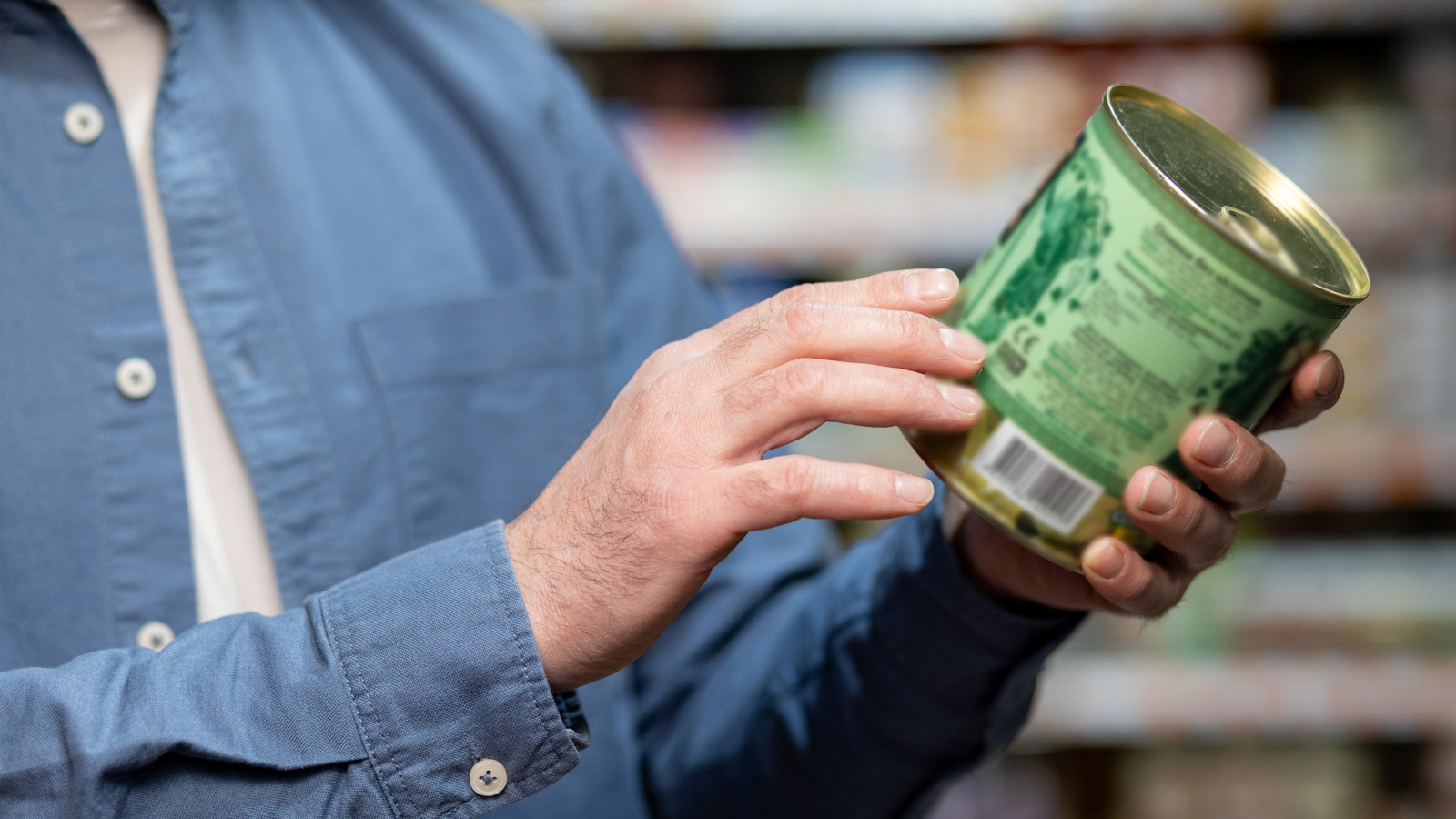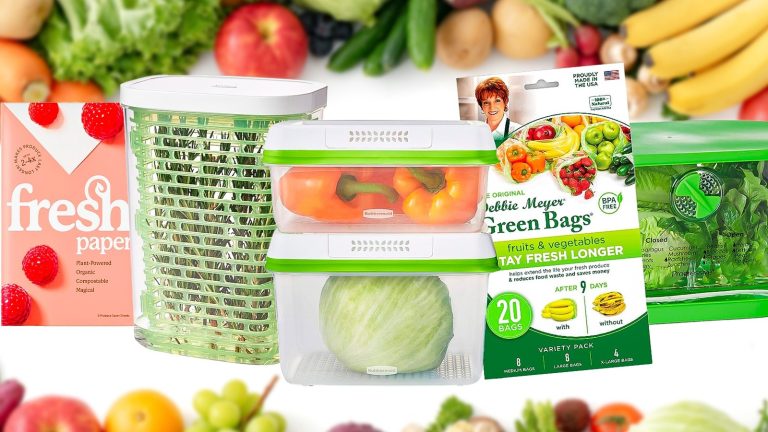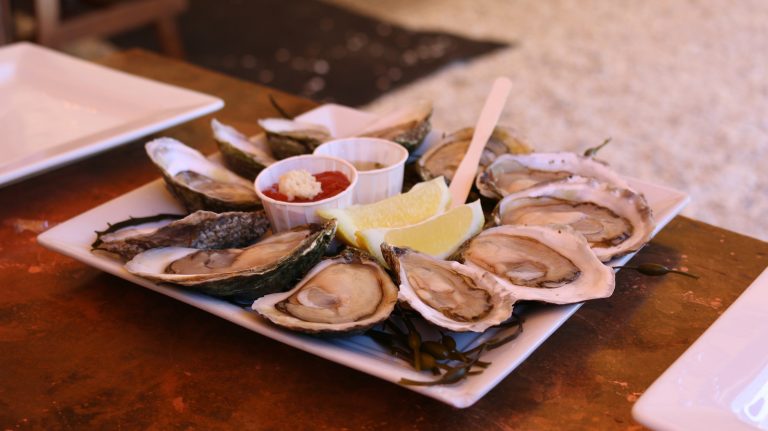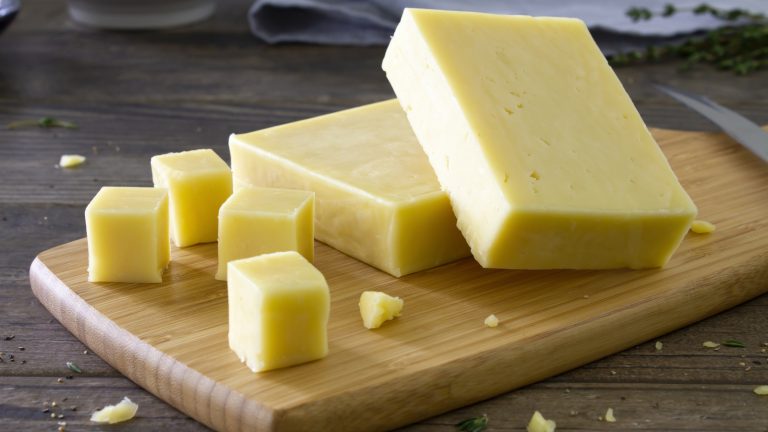If one lesson has proven paramount for American consumers in recent years, it is how self-reliance and preparedness are among the best hedges against political forces. Following the economic downturn, supply chain issues, and decades-high inflation experienced during and after the pandemic, talk of tariffs unquestionably has households on edge. Adding to the tariffs on foreign-made steel and aluminum imposed under then-President Joe Biden’s administration, President Donald Trump’s one-size-fits-all approach has the potential for driving up the cost of goods across the board — especially canned foods.
In lieu of reciprocal tariffs — paused for 90 days — the president placed a 10% tariff on a significant majority of countries with China being the most notable exception at a rate increased to 145%. As the pause brought officials to the negotiating table to work out deals with the United States, Trump hinted at an end goal of significantly decreasing or even eliminating income tax for those making less than $200,000 per year. Whether or not such a lofty outcome is even feasible, prudent shoppers could consider taking advantage of the long shelf-life of these different kinds of canned goods to fill the cupboards while riding out the uncertain economic forecast.
Tomatoes
Crushed, diced, stewed, whole, or made into paste, the varieties and versatility of canned tomatoes make them a key ingredient in myriad cultures and, therefore, a staple of many kitchens. While their flavor profile — distinct from fresh produce — is just one of an array of things to know about canned tomatoes, the extent at which tariffs impact them was reason enough to start stocking up.
Data from 2023 details that the top five exporters of tomatoes that year were Mexico, the Netherlands, Spain, Morocco, and France which combined to make up nearly 70% of the market. At the top of the list, Mexico has been hit with a 25% tariff across the board by the current administration in an attempt to leverage border security agreements and reinvigorate domestic manufacturing. So, whether you call it sauce or gravy, if you want to keep spaghetti nights from denting your budget, adding a few extra cans to your weekly shopping list could prove beneficial in the long run.
Coffee
Thanks to tariffs, those who enjoy barista-made specialty coffees might not be alone in paying a premium for their morning pick-me-up. In fact, looking at the rising prices of coffee could prove eye-opening enough whether canned or bagged. The top suppliers to the United States for 2023 and 2024 included Brazil, Colombia, Vietnam, and Honduras, which all face the 10% rate imposed by the administration. That didn’t even account for the anticipated increase in demand.
Prior to decisions on import taxes, global production of coffee was forecast to increase by nearly 7 million bags over the previous year when roughly 175 million bags of coffee had been produced. Putting that in perspective, each bag weighed in at around 132 pounds meaning more than 24 billion pounds of coffee were expected to come to market. While those who purchase canned brands would feel the added sting of tariffs on imported metals to make the containers, all java junkies were expected to get roasted to some extent.
Chickpeas
A unique legume, chickpeas — or garbanzo beans — are a protein-packed food commonly used in Mediterranean and Indian cuisine. In fact, while Australia is on record as the largest exporter of chickpeas, ahead of Canada and Indian in 2022, the latter topped the others in production by far. Combined, the three nations account for over 40% of the world’s chickpea exports, per the USDA, with Canada facing the same 25% across the board tariff rate as Mexico.
In addition to being enjoyed as-is or as one of the key ingredients in making hummus and falafel, chickpeas have proven to provide a quality substitute for vegan nutrition. Specifically looking at the canned variety, the liquid that comes along with garbanzo beans is called aquafaba, and it can be a substitute for eggs in a number of recipes. Making meringues is among the versatile uses the bean water provides meaning those looking to whip up some soft peaks might instead face some valleys in the near time without stocking up.
Baby formula
Surprising to more than a few first-time parents, newborn nutrition isn’t always as straightforward as access to mother’s milk. Even when breastfeeding isn’t an issue, allergies and digestive troubles make formula a must-have for some babies. Unfortunately, as was the case in 2022, it didn’t take much for an already disrupted supply chain — stretched thin by a voluntary recall from Abbott Nutrition over concerns of bacterial contamination — to send parents scrambling in search of substitutes.
In addition to the materials used to package the formula increasing in price over tariffs, ongoing negotiations with the European Union meant 10% tariffs could increase back to the 20% figure originally put forth by the president before the pause. Barring similar action taken by Congress in 2022 that amended the Harmonized Tariff Schedule to alleviate the stresses on the market, parents who rely on certain specialty brands from Europe like HiPP, Holle, and Kendamil could be seeking alternatives to make ends meet. Unlike other canned goods, parenting experts caution against getting too carried away with stockpiling, not only because of the devastating impact of creating scarcity, but because dietary tolerance could change quickly for infants.
Nuts
Already a costlier snack than some, nuts is exactly what some shoppers might find themselves saying the next time they are in the supermarket to pick up a can. In addition to adding a bit of protein to a salad — by cleverly incorporating them into the dressing — or staving off hunger between meals, nuts have branched well-beyond the stuff of trail mix and candy bars. From butters and spreads to non-dairy milks, more than $2.4 billion worth of tree nuts were imported into the United States in 2024, according to the U.S. Department of Agriculture Economic Research Service.
Vietnam, Mexico, Canada, China, and South Africa are counted among the top exporters, and the first month of 2025 saw more than $231 million worth of nuts brought into America. Before the pause, the Trump administration sought a 46% tariff on Vietnam which was responsible for more than 4% of all U.S. imports. Still, the Chinese rate at 145% loomed largest barring an agreement as over 13% of U.S. imports originate in China.
Beans
Rich in fiber and protein, beans are more than just a great side dish and ingredient in recipes. Cultures from around the world have made the extensive varieties shine in entrées of their own. What’s more, during hard times keeping canned beans around makes for a ready way to stretch a meal or sub-in as standalone if needed. Proving how prominent beans are as an American staple, the United States leads the world in importing them by more than double the next nearest nation.
At more than 550,000 shipments compared to Singapore’s roughly 214,000 and India’s near 78,000, the U.S. market has almost 15,000 buyers invested in this one commodity alone, notes Volza. As with other goods, China and Mexico were among the top suppliers to the United States along with Ecuador, meaning beans were subject to some of the highest tariffs that had been added. After China, India and Malaysia are the leading exporters overall leaving an avenue for alternative sources should trade decisions call for it.
Fruit
A side dish in its own right, canned cranberry sauce is either celebrated or avoided at holiday gatherings. Likewise, canned pineapple can elicit mixed emotions for some who envision the spiral ham topping adorning a slice of pizza. In either case, those commonly canned fruits were at the top of the list in their category of imports facing the uncertainty of tariffs. When it comes to cranberries, roughly half of the product exported from Peru wound up in the United States and, as of 2023, the South American nation was considered the third largest agricultural market of its continent with a value of $851 million, per the USDA.
For pineapple, Costa Rica led competitors in exports to the U.S. as Brazil, Honduras, Mexico, and the Philippines added their fair share to the market that was projected to increase to around $12 billion in 2025. American buyers account for over $1 billion of that as some forecasts anticipate global pineapple demand nearing $40 billion by 2029, notes U.S. Import Data.
Pet food
When talking about guard dogs, guide dogs, house and porch cats, birds, fish, reptiles, and caged critters of all kinds, fur babies and their kin are readily treated as members of the family in many a household. While the United States is a large exporter of food for four-legged friends throughout the world — especially to Canada — plenty of consumers trust brands that originate outside the domestic marketplace.
Most of the dog food imported to the U.S. comes from Vietnam, Thailand, and India. Similarly, companies like Petco don’t operate solely stateside, as they also have production in Mexico. Additionally, there are a number of brands that come out of Canada that customers gravitate toward because of the standards in production that guarantee hormones, antibiotics, and other unwanted additives are kept out of pet nutrition. In other words, those unprepared for rising costs could find themselves making undesirable concessions just to keep food in their pets’ dishes.
Condensed and evaporated milk
America’s flourishing dairy industry didn’t make milk immune from the concerns of increased import taxation. For starters, the United States had already experienced a spike in fertilizer costs as a result of the war in Ukraine, leading the USDA to invest heavily in domestic production. Further, while the shelf stable alternatives to the refrigerator staple didn’t amount to a considerable import to the U.S., itself a major exporter of dairy goods, the prices are expected to rise with other canned goods because of tariffs on metal.
Additionally, with China being a top importer of canned milk out of an overall dairy import market of roughly $4.6 billion in 2023, the Southeast Asian country’s own tariffs against the United States could compound disruption. Chinese President Xi Jinping’s government responded to Trump’s reciprocal tariffs with a 125% rate as it sought support from the European Union to oppose so-called “unilateral bullying practices,” per Forbes.
Tuna
The array of qualifiers detailing the difference in canned tuna selections on the supermarket shelf isn’t simply about providing consumers with options. In answering some of the oft-asked questions about albacore, bluefin, and other varieties, it’s important to know that how the fish is imported plays a factor in how tariffs are applied. From frozen shipments to those packed in airtight containers — with or without oil — regulations consider myriad options when working out the import taxes.
Already subject to the Harmonized Tariff Schedule under the U.S. International Trade Commission, which is responsible for narrowing down the specifics of the tariffs based on the preparation of the imported seafood, the added price to cans plus the rates applied to specific countries equaled lighter wallets for those enjoying melts and salads. China, Thailand, and Vietnam take credit for the majority of the United States imports.
Vienna sausage
With a history dating back more than 200 years, the popular cocktail-style sausages owe their unique flavor to their seasoning and canning process. Chicken broth, liquid smoke, and vinegar are typically added to the cased meat trimmings of chicken, beef, and pork before landing in a pantry with a shelf-life of up to five years. Whether seeking to satisfy a taste for nostalgia from their native Austria or one of the various global companies who’ve come to produce the popular pint-sized goods, tariffs have potential to leave their mark on meats across the board.
While freezers could provide anywhere from three to six months of storage, canned meats offer storage for years without occupying premium real estate in the refrigerator, making them an ideal hedge against rising prices. Of course, where consumers saw concern over the uncertainty of tariffs, domestic ranchers saw cause for optimism about how trade negotiations could lead to reenergizing the American market even as China, a huge importer of their beef, had raised its own tariffs to 125%.
Pumpkin
Native to North America, pumpkin may not initially come to mind when considering imports to the United States. However, because of the massive demand — especially in the fall — the land of the free held the top spot in global imports by taking in nearly a third of the entire market. In 2023 alone, America imported about $450 million worth of pumpkin just from Mexico, notes World’s Top Exports, the same country that now faced a 25% tariff across the board.
Adding up to another $50 million worth of imports, the remaining top five nations supplying pumpkin to the U.S. include Canada (also slapped with the 25% tariff), Costa Rica, the Dominican Republic, and Honduras. At about $197 million, $171 million, and $107 million worth in imports, France, Germany, and the United Kingdom combined respectively with the United States to account for over 50% of the world’s pumpkin demand. All told, a favored dessert could come at a premium for those who don’t prepare to make their pumpkin pie ahead of time.
Beer
Happy hours could be facing quite the buzzkill amid trade negotiations as the nation’s bestselling beer wasn’t on the list of domestics. After dethroning Bud Light as the king of beers in recent years, Modelo Especial had taken the top spot from its headquarters in Mexico. In addition to the 25% tariff for America’s southern neighbor, also the producer of Corona and Pacifico, there remained the compound factor of can prices.
According to estimates from the Beer Institute, around 18% of all beer consumed in the United States is imported and nearly 65% of all the suds are distributed in cans. So even American brews could expect to be dented by tariffs before even considering the source of their ingredients. In 2023, the United States accounted for roughly 6%, $308 million, of all malt imports, per Trend Economy. Of that, about $227 million came from Canada alone. Additionally, economists anticipate that beers that weren’t directly impacted by tariffs would likely see an increase in price as companies saw cause to benefit where their competitors were burdened.
Soup
A staple of those under the weather, tired of the weather, or weathering an economic storm, canned soup remains a go-to as a ready-made meal. Considering the array of ingredients that go into preparing all kinds of recipes that include meat, vegetables, and spices — each subject to tariffs — there was no ready workaround for producers to avoid the impact of import taxes.
Prior to the president’s pause, which did not abate the 25% rate on Canada, The Campbell’s Co. had held it’s second quarter earnings call for 2025 and reported that guidance had yet to factor in the possible impact. That did not mean the situation was going ignored as CEO Mick Beekhuizen explained that tinplate steel used to make Campell’s soup cans was imported from the Great White North. He also made clear that the company was working toward plans to mitigate any impact from tariffs with suppliers as there was no certainty around how long any of the rates would be in place.
Chili
Eaters may debate about whether or not to include beans in their chili, but the fact remained that either way could see a price increase as a result of tariffs. The tomato and meat-based concoction loaded with spices works just as well as a meal as it did a topping for burgers and hot dogs — and don’t forget its import in whipping up Frito pies.
Based in Chicago, Illinois, Conagra Brands, Inc. has a number of popular chilis among its extensive list of products. They include: Brooks, Dennison’s, Nalley, Wendy’s, and Wolf Brand Chili. Conagra also happened to join PepsiCo and J M Smucker in a letter to the president about the possibility of exempting certain imports from tariffs. The premise behind the exemption request is to protect companies that otherwise source goods domestically that have no alternative but to import certain necessary ingredients. As the world waits to see how the tariff negotiations would conclude, Conagra admitted to exploring its options in sourcing.





